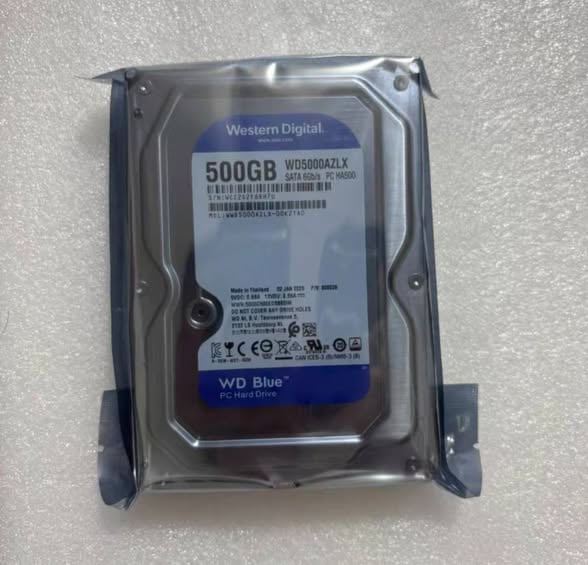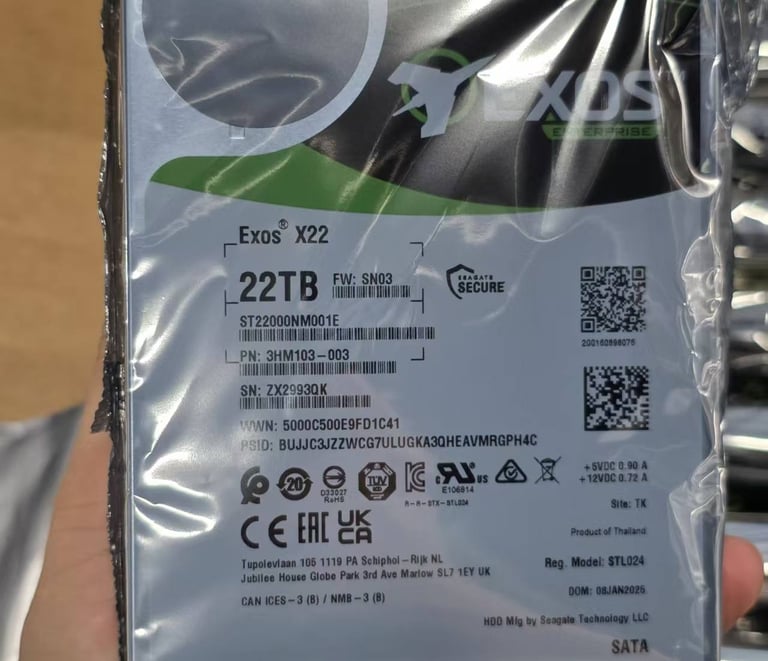Beyond the Cable: How HDD Interfaces Shape the Speed of Data Transfer
ELECTRONICS
10/26/20256 min read


The Unsung Hero Behind Every Hard Drive
When people talk about hard drives, the focus often falls on capacity — 2TB, 10TB, even 22TB drives dominate the conversation. But hidden beneath those numbers lies something far more influential: the interface. This quiet component — often just a slim connector or port — is the data highway that determines how information travels between your HDD and the system that reads it.
It’s not just about how much storage you have, but how fast and efficiently that data moves. Without the right interface, even the fastest spinning platters can crawl at a snail’s pace. The interface defines a drive’s communication limits, power management, and ultimately, its real-world performance.
Let’s take a deep dive into the world of HDD interfaces — the unseen architecture that fuels modern data ecosystems.
From PATA to SATA: The Birth of Serial Connectivity
Before the elegant simplicity of SATA, there was the era of PATA (Parallel ATA) — a flat, ribbon-like connector that looked more at home in a 1990s mainframe than in today’s compact machines.
PATA, also known as IDE, was revolutionary for its time. It could handle data rates up to 133 MB/s, which seemed blazing fast in the age of 5400 RPM drives. But parallel signaling had its limits — electrical interference, cable length restrictions, and bulky connectors made it unsuitable for the rapidly advancing world of compact computing.
Enter SATA (Serial ATA) — sleek, efficient, and designed for the new millennium. By transitioning from parallel to serial signaling, SATA drastically reduced interference, simplified cable management, and pushed speeds upward.
The original SATA I offered 1.5 Gb/s, SATA II reached 3.0 Gb/s, and SATA III capped at 6.0 Gb/s, roughly 600 MB/s in real-world performance. For most HDDs, this was — and still is — more than enough, as mechanical limits often fall below these interface caps.
The Rise of SAS: Powering the Enterprise Backbone
While SATA conquered consumer desktops, SAS (Serial Attached SCSI) became the backbone of enterprise storage.
SAS evolved from the SCSI protocol — a veteran in data center infrastructure known for its reliability and advanced command queuing. Unlike SATA, which connects one drive per cable, SAS can connect multiple drives via expanders, creating dense storage architectures perfect for servers and RAID arrays.
Modern SAS versions boast 12 Gb/s and 24 Gb/s transfer rates, double the bandwidth of SATA III. But what truly sets SAS apart is not just speed — it’s command efficiency, error handling, and redundant paths, ensuring data keeps flowing even if part of the chain fails.
For large-scale environments like data centers, AI servers, and enterprise clusters, SAS is the language of reliability.
Understanding How Interfaces Define Performance
Imagine two highways: one is a six-lane expressway (SAS), the other a two-lane rural road (SATA). Both lead to the same destination — your CPU — but their traffic rules and capacities differ.
Interfaces determine:
Maximum throughput (bandwidth)
Command queue depth
Latency behavior
Data integrity verification
Error correction and redundancy
A high-performance interface ensures data flows continuously without congestion or signal loss. In contrast, a limited interface acts as a bottleneck, capping performance no matter how fast your HDD can spin.
SATA vs. SAS: A Technical Showdown
Let’s compare two of the most common HDD interfaces in today’s storage world: SATA and SAS.
FeatureSATA IIISAS 12Gb/sSpeed6.0 Gb/s (~600 MB/s)12 Gb/s (~1200 MB/s)Connection1 drive per portMultiple drives via expandersReliabilityConsumer-gradeEnterprise-gradeCommand Queues32256+Cable LengthUp to 1 meterUp to 10 metersHot SwapYesYesTypical UseDesktops, NASServers, Data Centers
The takeaway? SATA is built for affordability and simplicity, while SAS prioritizes endurance, scalability, and nonstop operation.
In enterprise workloads — where millions of read/write cycles occur daily — SAS reigns supreme. But for home NAS users or workstation builders, SATA remains a dependable, cost-effective solution.
Why Interfaces Matter Even When Drives Look the Same
You could line up ten HDDs that look identical — same capacity, same size — but under the hood, their interfaces transform their purpose.
A Seagate Exos 20TB SAS and a Seagate Exos 20TB SATA might share platters and cache architecture, yet their interface protocols give them distinct personalities. The SAS model can handle simultaneous multi-user transactions, queue deeper workloads, and recover faster from read errors.
This difference is invisible to the eye but monumental in performance-critical systems. Choosing the right interface means aligning your hardware to your workload profile — whether that’s continuous video recording, transactional databases, or cloud backup.
The Future of HDD Connectivity: Bridging SAS and NVMe
While HDDs traditionally rely on SATA and SAS, the rise of NVMe (Non-Volatile Memory Express) has changed the game for SSDs — and it’s now influencing the design of next-generation hybrid drives.
NVMe over PCIe removes the latency bottlenecks of older protocols, allowing data to move directly through the CPU’s high-speed lanes. Though HDDs can’t match SSD latency, new interface controllers are being developed to bring NVMe-inspired command efficiency to mechanical storage.
Imagine hybrid storage arrays where SAS HDDs and NVMe SSDs coexist seamlessly, managed by intelligent controllers that dynamically route data based on priority and speed requirements. That’s where enterprise storage is heading — a multi-interface ecosystem where each drive type plays a specialized role.
How Interface Choice Impacts Data Centers
In modern data centers, interfaces dictate not just performance, but architecture design.
A system built around SAS expanders can host thousands of drives under a unified command structure, minimizing controller overhead. Conversely, SATA-based arrays offer affordability but require more controller channels and have limited queue depth.
The result? Interface selection directly affects power efficiency, scalability, and maintenance costs. That’s why large-scale operators often standardize on SAS or even hybrid setups that blend SAS HDDs for cold storage and NVMe SSDs for caching.
In this sense, the interface becomes a strategic decision, not a mere specification.
Signal Integrity and Electrical Design
Interfaces aren’t just digital specifications — they’re electrical environments. A 12Gb/s SAS signal travels through differential pairs, and even minor impedance mismatches can cause bit errors.
Cable quality, shielding, and connector precision matter more than most realize. An enterprise-grade SAS backplane, for example, must maintain signal integrity across multiple connectors and expanders. It’s engineering at the microscopic level — electrons in motion, translating into the flow of human knowledge.
Firmware, Commands, and the “Language” of Interfaces
Each interface has its own dialect.
SATA speaks AHCI (Advanced Host Controller Interface), a command protocol optimized for simple queueing. SAS speaks SCSI, which supports tagged command queuing, error recovery, and multi-initiator access.
These languages shape how the host and drive communicate. Even if two drives share physical connectors, firmware translation layers determine how efficiently commands are executed.
In the enterprise world, milliseconds matter — and interface protocol efficiency often decides who wins the speed race.
Backward Compatibility: The Hidden Advantage
One of the most practical design features of both SATA and SAS is backward compatibility.
A SAS controller can communicate with SATA drives, allowing flexible configurations in mixed environments. This cross-compatibility ensures that data centers can upgrade incrementally, reducing downtime and cost.
However, the reverse isn’t true — SATA controllers cannot talk to SAS drives. That’s why planning your storage infrastructure with SAS-capable controllers ensures maximum flexibility down the road.
Real-World Scenarios: Matching Interface to Use Case
Choosing an interface isn’t about theoretical speed — it’s about the right tool for the right job.
SATA → Perfect for NAS, backup servers, and general-purpose storage.
SAS → Ideal for enterprise workloads, 24/7 databases, and virtualization clusters.
NVMe → The new king for latency-sensitive operations like analytics, AI, and HPC.
The secret to a well-balanced system lies in interface orchestration — aligning data pathways with operational demands.
The Coming Decade: What’s Next for HDD Interfaces
As storage capacities surge past 30TB and beyond, interfaces must evolve to handle not just more data, but smarter data flow.
We’re entering an era where energy-efficient signaling, AI-driven I/O scheduling, and cross-protocol compatibility will define performance boundaries. Hybrid connectors, universal backplanes, and adaptive controllers will likely bridge the gap between SAS, SATA, and PCIe.
Even as solid-state drives dominate primary workloads, HDDs remain irreplaceable for cost-effective mass storage — and interfaces will continue to determine how efficiently those petabytes move.
Conclusion: The Interface Is the Invisible Power Behind Storage
In the grand narrative of computing, the interface has always been the invisible enabler — the silent highway that connects spinning platters to the digital world. Whether it’s the humble SATA cable in a home NAS or the high-speed SAS fabric in a hyperscale data center, the interface dictates how fast, how safe, and how intelligently your data travels.
At Leon Wholesale, we understand that true storage performance doesn’t come just from capacity — it comes from the perfect combination of hardware, interface, and reliability.
We supply a full range of HDDs, SSDs, and enterprise storage solutions to customers worldwide, ensuring every data system has the performance backbone it deserves.
📌 Seller: Leon Wholesale
📞 WhatsApp: +8618136773114
📧 Email: leonxu0317@gmail.com
#HDDInterfaces #SATA #SAS #NVMe #StorageTechnology #DataCenter #EnterpriseStorage #HardDrive #DataTransfer #StorageSolutions #LeonWholesale #ServerHardware #HighCapacityDrives #StoragePerformance #TechSupply #InStock #WTS #OEMStorage #StorageDevices #ITInfrastructure #TechDistribution #StorageWholesale #DataStorage #EnterpriseHardware #SATAHDD #SASHDD #ServerDrives #HDDTechnology #StorageInnovation


